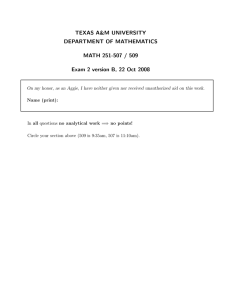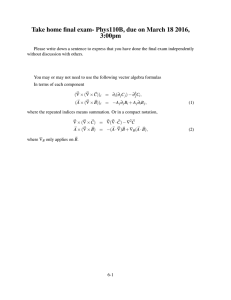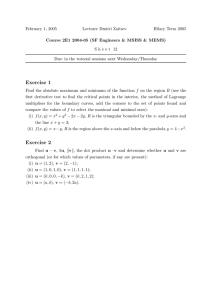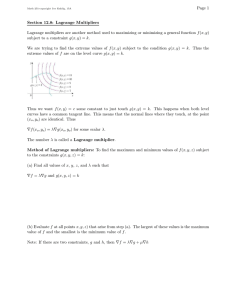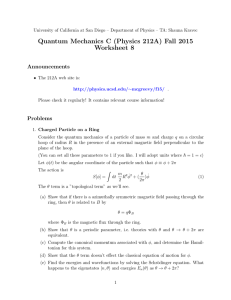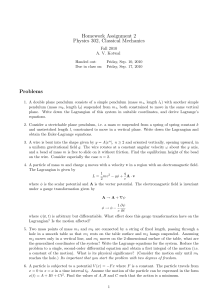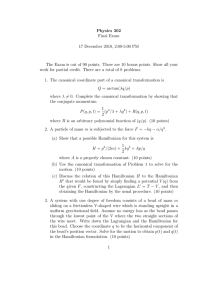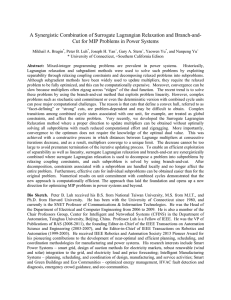PHYSICS 200A : CLASSICAL MECHANICS FINAL EXAMINATION Do all problems
advertisement
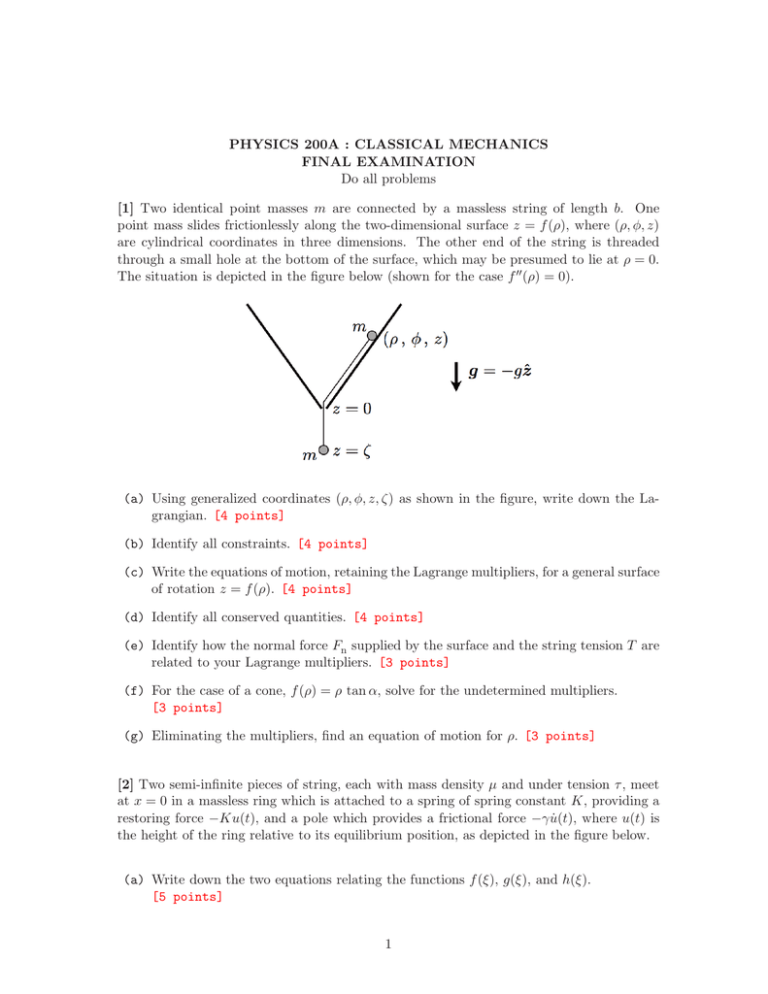
PHYSICS 200A : CLASSICAL MECHANICS FINAL EXAMINATION Do all problems [1] Two identical point masses m are connected by a massless string of length b. One point mass slides frictionlessly along the two-dimensional surface z = f (ρ), where (ρ, φ, z) are cylindrical coordinates in three dimensions. The other end of the string is threaded through a small hole at the bottom of the surface, which may be presumed to lie at ρ = 0. The situation is depicted in the figure below (shown for the case f ′′ (ρ) = 0). (a) Using generalized coordinates (ρ, φ, z, ζ) as shown in the figure, write down the Lagrangian. [4 points] (b) Identify all constraints. [4 points] (c) Write the equations of motion, retaining the Lagrange multipliers, for a general surface of rotation z = f (ρ). [4 points] (d) Identify all conserved quantities. [4 points] (e) Identify how the normal force Fn supplied by the surface and the string tension T are related to your Lagrange multipliers. [3 points] (f) For the case of a cone, f (ρ) = ρ tan α, solve for the undetermined multipliers. [3 points] (g) Eliminating the multipliers, find an equation of motion for ρ. [3 points] [2] Two semi-infinite pieces of string, each with mass density µ and under tension τ , meet at x = 0 in a massless ring which is attached to a spring of spring constant K, providing a restoring force −Ku(t), and a pole which provides a frictional force −γ u̇(t), where u(t) is the height of the ring relative to its equilibrium position, as depicted in the figure below. (a) Write down the two equations relating the functions f (ξ), g(ξ), and h(ξ). [5 points] 1 (b) Find the transmission coefficient t(k) = ĥ(k)/fˆ(k), [5 points] (c) Suppose f (x) = y0 e−|x|/ℓ . Find the total energy E of the wave. [5 points] (d) Find h(x). You may find it convenient to define λ ≡ (2τ + γc)/K, where c ≡ [10 points] p τ /µ. [3] A particle of mass m and charge e moves frictionlessly along a massless hoop of radius a. The symmetry axis of the hoop rotates in the horizontal plane. The particle moves in ~ the presence of both gravity ~g = −gẑ and a rapidly oscillating AC electric field E(t) = E0 ẑ cos ωt. The setup is depicted in the figure below. (a) Find the Lagrangian of the system L(θ, φ, θ̇, φ̇, t). [5 points] (b) Find the Hamiltonian of the system H(θ, φ, pθ , pφ , t). [5 points] (c) Using the method of fast perturbations, and invoking conservation of pφ , find the effective Hamiltonian K(PΘ , Θ) for the slow time scale motion of the angle Θ(t), defined to be the slow component of θ(t). [5 points] (d) When pφ = 0, show that the point Θ = π becomes stable for small oscillations if the electric field strength |E0 | exceeds a critical value, E0,c . Find E0,c . [5 points] 2 (e) For general pφ , find an equation whose solution yields the equilibrium positions of Θ. It may be convenient to define the quantities r r pφ g eE0 , Ω= , ν= , ω0 = a ma ma2 all of which have dimensions of frequency. [5 points] [4] Provide short, accurate answers to each of the following. (a) A particle of mass m moves in two dimensions (x, y) subject to the potential U (x, y) = mgy and the constraint x ey/a + y ex/a = b , where a and b are constants. Find the equations of motion. [5 points] (b) A particle of mass m moves in three dimensions subject to a potential U (x, y, z) = U0 . (x + 2z)2 + (y − x)2 Find all conserved quantities. [5 points] (c) In what sense do hurricanes rotate in the northern hemisphere, when viewed from above? Explain the basic physics which yields this result. [5 points] (d) Under what conditions is the Hamiltonian of a mechanical system equal to the sum of its kinetic and potential energies? [5 points] (e) A canonical transformation is generated by F2 (q, P ) = qP cos λ + 21 (q 2 − P 2 ) sin λ , where λ is a dimensionless parameter. Find Q(q, p) and P (q, p) and show explicitly that the transformation is canonical. [5 points] 3
